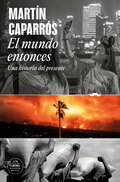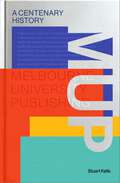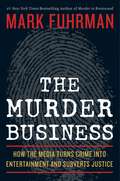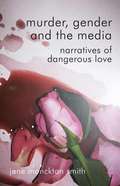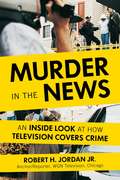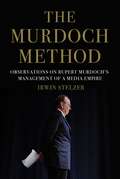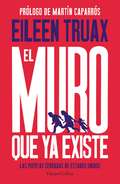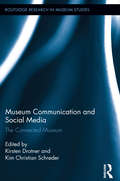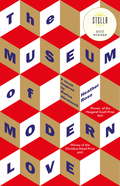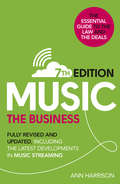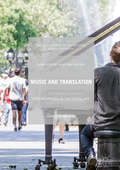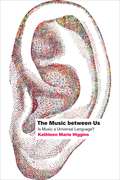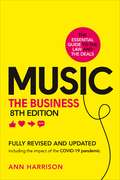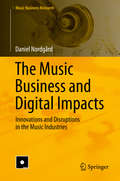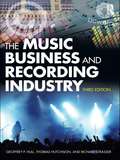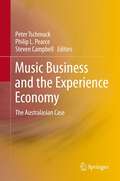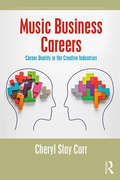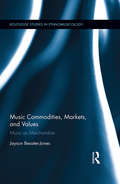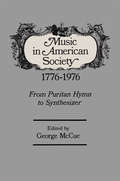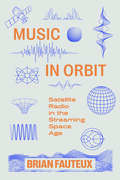- Table View
- List View
El mundo entonces
by Martín Caparrós*Premio Ortega y Gasset de Periodismo a la trayectoria profesional 2023* El mundo entonces es un fascinante retrato de nuestro presente, una herramienta que sirve para definir qué hacemos, quiénes somos, quiénes –quizá– seremos. «Martín Caparrós, uno de los más geniales cronistas contemporáneos, depura de manera exquisita, emocionada, vibrante y distanciada una prosa de un poderío narrativo excepcional». Fernando R. Lafuente, ABC Cultural El mundo entonces es una guía para entender el mundo en que vivimos. Escrito –propone Caparrós– por una historiadora del siglo XXII, resume y entrecruza los principales hilos conductores de nuestra organización social, económica, política y cultural para ofrecernos un panorama general de nuestra sociedad en el fin de la Era del Fuego. Sus capítulos incluyen desde la explosión demográfica hasta los cambios en el amor, la familia y la situación de las mujeres, pasando por las nuevas formas del trabajo, la irrupción de la IA, el poder de las grandes corporaciones digitales y su peso en nuestras vidas, el avance chino y el descrédito de las democracias, los cambios en el ocio y la alimentación, las nuevas formas de hacer la guerra y las viejas formas de creer en dioses. Todo contado de una forma sencilla y amena, enriquecida por análisis y datos que iluminan nuestra realidad con nuevos sentidos, miradas diferentes.Una primera aproximación a este proyecto fue publicada a lo largo de varios meses en El País. Este libro es su versión actualizada y aumentada con los perfiles de 25 personajes que definen nuestra época, desde Putin o Messi o Elisabeth Holmes hasta una pastora mongola o un príncipe de las islas Marshall o una obrera bengalí. Sobre el autor y su obra se ha dicho:«Un exquisito de la escritura y un lector omnívoro [...] Caparrós es una manera de ver y de entender el mundo».Carles Geli, Babelia «Caparrós es un maestro de la crónica».Juan Villoro, Reforma «Su prosa y su mirada son un reactivo fuerte para almas sensibles o amigas de lo políticamente correcto».Leila Guerriero, El País«El mejor cronista actual de América Latina: un soberbio entrevistador, un viajero dotado de cultura enciclopédica y de una fina ironía».Roberto Herrscher, La Vanguardia «El autor argentino despliega en Ñamérica el retrato coral de un continente marcadopor los tópicos literarios, el maniqueísmo histórico y la desigualdad económica».Andrea Aguilar, Babelia, El País «El conjunto es el resultado deun esfuerzo superheroico por contar y pensar de nuevo —y con nuevas ideas— medio continente».Jorge Carrión, La Vanguardia (sobre Ñamérica)
MUP: A Centenary History
by Stuart KellsAustralia's oldest university press is also one of our best known and most trusted publishers. Founded in 1921 as a bookshop for students at the University of Melbourne, Melbourne University Press was soon publishing important works that contained the best of national scholarship. Landmark MUP books and series include The Australian Dictionary of Biography, Manning Clark's History of Australia, The Encyclopaedia of New Guinea and the journal Meanjin. These and other MUP publications helped shape how Australians perceived themselves, and how they talked about literature, politics, race, the Pacific, the world wars and public policy. From its inception, MUP grappled with hard questions. How should a university press be governed? To what extent should such a press be concerned with political, polemical and radical works? And can a university press be financially self-sustaining if it focuses on books that commercial publishers overlook? The respective leaders of MUP answered these questions in ways that regularly led the press into controversy. Using a century of MUP publications and archives, Stuart Kells has written a rich and fascinating history of an invaluable Australian institution-one that is widely seen as public property, and whose ups and downs have always been news.
Murder and Media in the New Rome
by Thomas SimpsonAn insightful look into the origins of modern Italian media culture by examining a sensational crime and trial that took place in Rome in the late 1870s, when a bloody murder triggered a national spectacle that became the first great media circus in the new nation of Italy, crucially shaping the young state's public sphere and image of itself.
The Murder Business: How the Media Turns Crime Into Entertainment and Subverts Justice
by Mark FuhrmanCrime stories fascinate the public. But between factual news stories, overblown "human interest" reports and salacious murder mystery exposés, it's difficult to tell where news ends and entertainment begins. Mark Fuhrman, best-selling author of Murder in Brentwood, explores this fine line and how it is increasingly being crossed, revealing new and shocking details on such highprofile cases as JonBenet Ramsey, Martha Moxley and Chandra Levy. In The Murder Business, Fuhrman argues that the media's approach to covering crime ("if it bleeds, it leads") has allowed many criminals to get away with murder and impeded the search for justice. The Murder Business presents a compelling plea for journalists, cops and citizens to demand higher ethical standards in the pursuit of justice.
The Murder Gang: Fleet Street’s Elite Group of Crime Reporters in the Golden Age of Tabloid Crime
by Neil RootThey were an elite group of renegade Fleet Street crime reporters covering the most notorious British crime between the mid-1930s and the mid-1960s. It was an era in which murder dominated the front and inside pages of the newspapers – the ‘golden age’ of tabloid crime. Members of the Murder Gang knew one another well. They drank together in the same Fleet Street pubs, but they were also ruthlessly competitive in pursuit of the latest scoop. It was said that when the Daily Express covered a big murder story they would send four cars: one containing their reporters, the other three to block the road at crime scenes to stop other rivals getting through. As a matter of course, Murder Gang members listened in to police radios, held clandestine meetings with killers on the run, made huge payments to murderers and their families – and jammed potatoes into their rivals’ exhaust pipes so their cars wouldn’t start. These were just the tools of the trade; it was a far cry from modern reporting. Here, Neil Root delves into their world, examining some of the biggest crime stories of the era and the men who wrote them. In turns fascinating, shocking and comical, this tale of true crime, media and social history will have you turning the pages as if they were those newspapers of old.
Murder, Gender and the Media
by Jane Monckton SmithThis volume is a shocking insight into the way the idea of romantic love can justify and excuse the killing of women by their spouses and partners, and lead to sympathy and reduced prison sentences for the killers. The author explores how stories of domestic homicide and love are told in the news, by the police, and in the courts, drawing from the reporting of 72 cases which happened in just one twelve month period. The findings make compelling reading and are important in understanding how we respond to domestic abuse and violence more generally, making clear the need to listen to victims more closely both before and after death. The book also includes a personal account of the aftermath of a double murder which was pivotal to the introduction of Domestic Homicide Reviews in the UK in April 2011.
Murder in the News: An Inside Look at How Television Covers Crime
by Robert H. JordanA veteran, Emmy Award-winning TV news anchor provides a unique insider glimpse into the newsroom revealing how murder cases are selected for TV coverage.Television news anchor Robert Jordan Jr. draws from forty-seven years of news experiences to provide an eye-opening look at how news programs decide which murders to cover and which ones to ignore. Jordan takes readers behind the scenes into the big city newsrooms of Chicago. Here split-second decisions are made on where to send limited resources when dozens of shootings and several murders are occurring on a daily basis.Using interviews from decision makers--such as assignment editors and producers--who work daily in the trenches of working newsrooms, the reader learns how they decide where to send reporters; when to dispatch live trucks; and how the stories will be treated as they are placed in the news programming. Why will one story get "breaking news" banners and be placed at the top of the broadcast while others may not make the air at all or may be given casual mention in later segments?Additionally, Jordan reveals the results of a ground-breaking questionnaire sent to producers and assignment editors at Chicago television stations to assess their rationales for covering murder stories the way they do. Finally, he examines how the explosion of social media platforms has changed the dynamic of reporting the news and why murders are the perfect stories for television, as news organizations struggle to survive.
The Murdoch Method: Observations On The Management Of A Media Empire
by Irwin StelzerFollowing Murdoch’s journey from a small-town newspaperman to a globe-dominating media mogul, a clear-eyed examination of Rupert Murdoch’s business philosophies and management techniques, from a key advisor of thirty-five years. After having worked closely with the legendary media titan for thirty-five years, Irwin Stelzer is uniquely positioned to evaluate Murdoch’s media empire through periods of rapid expansion and acquisitions, times of financial and regulatory stress, and political battles in Britain and America. Stelzer helped plan important company conclaves and assisted with Murdoch’s speeches, at least one of which was responsible for having News Corp barred by the Chinese regime from doing business in that country. Here are the philosophies on how Rupert approaches and values deals, whether stalking the Wall Street Journal for decades before pouncing, or “over-paying” for everything from Fox Studios to NFL rights; how he copes with regulatory constraints; how he wins some and loses some, must notably MySpace. The Murdoch Method is the sum total of the management techniques that grew out of Rupert’s attitudes and conceptions, taking him from a struggling newspaper in an out-of-the-way town in Australia to running a globe-dominating media enterprise.
El muro que ya existe
by Eileen TruaxDurante décadas ha operado una máquina anti inmigratoria del gobierno estadounidense en connivencia con el mexicano, cometiendo violaciones a los derechos humanos e incumpliendo los estatutos internacionales para brindar refugio. En un país que empezó teniendo perseguidos políticos desde el salinismo, hasta el masivo desplazamiento forzada a causa de las políticas de seguridad del calderonismo, Eileen Truax, expone a través de un reporteo altamente contextualizado, las historias de quienes huyen de manera desesperada y sin encontrar el cobijo legal, económico y social de su país de origen, ni en el que históricamente se ha comprometido ante el mundo.
Murrow: His Life and Times
by A. M. SperberMurrow is the biography of America's foremost broadcast journalist, Edward R. Murrow. At twenty-nine, he was the prototype of a species new to communications--an eyewitness to history with the power to reach millions. His wartime radio reports from London rooftops brought the world into American homes for the first time. His legendary television documentary "See It Now" exposed us to the scandals and injustices within our own country. Friend of Presidents, conscience of the people, Murrow remained an enigma--idealistic, creative, self-destructive. In this portrait, based on twelve years of research, A. M. Sperber reveals the complexity and achievements of a man whose voice, intelligence, and honesty inspired a nation during its most profound and vulnerable times.
Museum Communication and Social Media: The Connected Museum (Routledge Research in Museum Studies #6)
by Kirsten Drotner Kim Christian SchrøderVisitor engagement and learning, outreach, and inclusion are concepts that have long dominated professional museum discourses. The recent rapid uptake of various forms of social media in many parts of the world, however, calls for a reformulation of familiar opportunities and obstacles in museum debates and practices. Young people, as both early adopters of digital forms of communication and latecomers to museums, increasingly figure as a key target group for many museums. This volume presents and discusses the most advanced research on the multiple ways in which social media operates to transform museum communications in countries as diverse as Australia, Denmark, Germany, Norway, the UK, and the United States. It examines the socio-cultural contexts, organizational and education consequences, and methodological implications of these transformations.
The Museum of Modern Love
by Heather Rose'One of my stand-out Australian reads from 2016 . . . A glorious novel, meditative and special' Hannah Kent, author of BURIAL RITESArky Levin, a film composer in New York, has promised his wife that he will not visit her in hospital, where she is suffering in the final stages of a terminal illness. She wants to spare him a burden that would curtail his creativity, but the promise is tearing him apart. One day he finds his way to MOMA and sees Mariana Abramovic in The Artist is Present. The performance continues for seventy-five days and, as it unfolds, so does Arky. As he watches and meets other people drawn to the exhibit, he slowly starts to understand what might be missing in his life and what he must do.
Museum Texts: Comunication Frameworks (Museum Meanings)
by Louise RavelliAnswering key questions in the study of how museums communicate, Louise Ravelli provides a set of frameworks to investigate the complexities of communication in museums: * What is an appropriate level of complexity for a written label?* Why do some choice in language make a more direct relation to visitors?* Is there a correct way of presenting a particular view of content?* How do design practices contribute to the overall meanings being made? The frameworks enhance the way we critically analyze and understand museums text, both in the sense of conventional – written texts in museums – and in an expanded sense of the museum as a whole operating as a communicative text. Using a wide range of examples Ravelli argues that communication contributes fundamentally to what a museum is, who it relates to and what it stands for. Not only museum studies and communications studies students, but also professionals in the field will find Museum Texts an indispensable guide on communication frameworks.
Music (7th edition): Fully Revised and Updated, including the latest developments in music streaming
by Ann HarrisonThis essential and highly acclaimed guide, now updated and revised in its seventh edition, explains the business of the British music industry. Drawing on her extensive experience as a media lawyer, Ann Harrison offers a unique, expert opinion on the deals, the contracts and the business as a whole. She examines in detail the changing face of the music industry and provides absorbing and up-to-date case studies. Whether you’re a recording artist, songwriter, music business manager, industry executive, publisher, journalist, media student, accountant or lawyer, this practical and comprehensive guide is indispensable reading. Fully revised and updated. Includes: · The current types of record and publishing deals, and what you can expect to see in the contracts· A guide to making a record, manufacture, distribution, branding, marketing, merchandising, sponsorship, band arrangements and touring · The most up-to-date information on music streaming, digital downloads, online marketing and piracy· An in-depth look at copyright law and related rights· Case studies illustrating key developments and legal jargon explained.
Music and Translation: New Mediations in the Digital Age (Palgrave Studies in Translating and Interpreting)
by Lucile DesblacheThis book explores how transformations and translations shape musical meanings, developments and the perception of music across cultures. Starting with the concept of music as multimodal text, the author understands translation as the process of transferring a text from one language – verbal or not – into another, interlingually, intralingually or intersemiotically, as well as the products that are derived from this process. She situates music and translation within their contemporary global context, examining the tensions between local and global, cosmopolitan and national, and universal and specific settings, to arrive at a celebration of the translational power of music and an in-depth study of how musical texts are translated. This book will be of interest to translation studies scholars who want to broaden their horizons, as well as to musicians and music scholars seeking to understand how cultural exchange and dissemination can be driven by translation.
The Music between Us: Is Music a Universal Language?
by Higgins Kathleen MarieFrom our first social bonding as infants to the funeral rites that mark our passing, music plays an important role in our lives, bringing us closer to one another. In The Music between Us, philosopher Kathleen Marie Higgins investigates this role, examining the features of human perception that enable music's uncanny ability to provoke, despite its myriad forms across continents and throughout centuries, the sense of a shared human experience. Drawing on disciplines such as philosophy, psychology, musicology, linguistics, and anthropology, Higgins's richly researched study showcases the ways music is used in rituals, education, work, healing, and as a source of security and--perhaps most importantly--joy. By participating so integrally in such meaningful facets of society, Higgins argues, music situates itself as one of the most fundamental bridges between people, a truly cross-cultural form of communication that can create solidarity across political divides. Moving beyond the well-worn takes on music's universality, The Music between Us provides a new understanding of what it means to be musical and, in turn, human.
Music: The Business (8th edition)
by Ann HarrisonThis essential and highly acclaimed guide, now updated and revised in its eighth edition, explains the business of the British music industry.Drawing on her extensive experience as a media lawyer, Ann Harrison offers a unique, expert opinion on the deals, the contracts and the business as a whole. She examines in detail the changing face of the music industry and provides absorbing and up-to-date case studies.Whether you're a recording artist, songwriter, music business manager, industry executive, publisher, journalist, media student, accountant or lawyer, this practical and comprehensive guide is indispensable reading.Fully revised and updated. Includes:· The current types of record and publishing deals, and what you can expect to see in the contracts· A guide to making a record, manufacture, distribution, branding, marketing, merchandising, sponsorship, band arrangements and touring· Information on music streaming, digital downloads and piracy· The most up-to-date insights on how the COVID-19 crisis has affected marketing· An in-depth look at copyright law and related rights· Case studies illustrating key developments and legal jargon explained.
The Music Business and Digital Impacts: Innovations and Disruptions in the Music Industries (Music Business Research)
by Daniel NordgårdThis book provides rare insights into the difficult and complex dialogues between stakeholders within and outside the music industries in a time of transition. It builds on a series of recorded meetings in which key stakeholders discuss and assess options and considerations for the music industries’ transition to a digital era. These talks were closed to the public and operated under the Chatham House Rule, which means that they involved a very different type of discussion from those held in public settings, panels or conferences. As such, the book offers a much more nuanced understanding of the industries’ difficulties in adjusting to changing conditions, demonstrating the internal power-struggles and differences that make digital change so difficult. After presenting a theoretical framework for assessing digital change in the music industries, the author then provides his research findings, including quotes from the Kristiansand Roundtable Conference. Following from these findings, he develops three critical concepts that explain the nature as well as the problems of the music industries’ adaptation process. In conclusion, he challenges the general definition of crisis in the music industries and contradicts the widely held view that digitalization is a case of vertical integration.
The Music Business and Recording Industry
by Geoffrey P Hull Thomas Hutchison Richard StrasserThe Music Business and Recording Industry is a comprehensive music business textbook focused on the three income streams in the music industry: music publishing, live entertainment, and recordings. The book provides a sound foundation for understanding key issues, while presenting the latest research in the field. It covers the changes in the industry brought about by the digital age, such as changing methods of distributing and accessing music and new approaches in marketing with the Internet and mobile applications. New developments in copyright law are also examined, along with the global and regional differences in the music business.
Music Business and the Experience Economy
by Peter Tschmuck Philip L. Pearce Steven CampbellMusic Business and the Experience Economy is the first book on the music business in Australasia from an academic perspective. In a cross-disciplinary approach, the contributions deal with a wide-range of topics concerning the production, distribution and consumption of music in the digital age. The interrelationship of legal, aesthetic and economic aspects in the production of music in Australasia is also highlighted as well as the emergence of new business models, the role of P2P file sharing, and the live music sector. In addition, the impact of the digital revolution on music experience and valuation, the role of music for tourism and for branding, and last but not least the developments of higher music education, are discussed from different perspectives.
Music Business Careers: Career Duality in the Creative Industries (Routledge Research in Creative and Cultural Industries Management)
by Cheryl Slay CarrThe music industry offers the opportunity to pursue a career as either a creative (artist, producer, songwriter, etc.) or as a music business "logician" (artist manager, agent, entertainment attorney, venue manager, etc.). Though both vocational paths are integral to the industry’s success, the work of calling songs into existence or entertaining an audience differs from the administrative aspects of the business, such as operating an entertainment company. And while the daily activities of creatives may differ from those of the music business logician, the music industry careerist may sense a call to Career Duality, to work on both sides of the industry as a Career Dualist, a concept this book introduces, defines, and explores in the context of the music industry. This new volume speaks to the dilemma experienced by those struggling with career decisions involving whether to work in the industry using their analytical abilities, or to work as a creative, or to do both. The potential financial challenges encountered in working in the industry as an emerging artist may necessitate maintaining a second and simultaneous occupation (possibly outside the industry) that offers economic survival. However, this is not Career Duality. Likewise, attending to the business affairs that impact all creatives is not Career Duality. Rather, Career Duality involves the deliberate pursuit of a dual career as both a music industry creative and music business logician, which is stimulated by the drive to express dual proclivities that are simultaneously artistic and analytical. By offering a Career Duality model and other constructs, examining research on careers, calling, authenticity and related concepts, and providing profiles of music industry dualists, this book takes readers on a journey of self-exploration and offers insights and recommendations for charting an authentic career path. This is a practical examination for not only music industry professionals and the entertainment industry, but for individuals interested in expressing both the analytical and artistic self in the context of career.
Music Commodities, Markets, and Values: Music as Merchandise (Routledge Studies in Ethnomusicology)
by Jayson Beaster-JonesThis book examines music stores as sites of cultural production in contemporary India. Analyzing social practices of selling music in a variety of retail contexts, it focuses upon the economic and social values that are produced and circulated by music retailers in the marketplace. Based upon research conducted over a volatile ten-year period of the Indian music industry, Beaster-Jones discusses the cultural histories of the recording industry, the social changes that have accompanied India’s economic liberalization reforms, and the economic realities of selling music in India as digital circulation of music recordings gradually displaced physical distribution. The volume considers the mobilization of musical, economic, and social values as a component of branding discourses in neoliberal India, as a justification for new regimes of legitimate use and intellectual property, as a scene for the performance of cosmopolitanism by shopping, and as a site of anxiety about transformations in the marketplace. It relies upon ethnographic observation and interviews from a variety of sources within the Indian music industry, including perspectives of executives at music labels, family-run and corporate music stores, and hawkers in street markets selling counterfeit recordings. This ethnography of the practices, spaces, and anxieties of selling music in urban India will be an important resource for scholars in a wide range of fields, including ethnomusicology, anthropology, popular music studies, and South Asian studies.
Music Distribution and the Internet: A Legal Guide for the Music Business
by Andrew SparrowThere is hardly an aspect of internet music promotion, sale and distribution which does not have a legal dimension. Since the stakeholders in the process includes artists, their managers, music publishers, record companies, distribution companies and the consumer, the law relating to internet music distribution is extremely complex. Andrew Sparrow's Music Distribution and the Internet provides those connected to the music and media industries with a guide to the legal requirements they must meet, answering questions such as: ¢ How should you conclude contracts with consumers over the internet? ¢ What are the various legal terms and conditions that should govern the sale of physical product to online music buyers? ¢ How should a website user's personal information be handled? ¢ What limitations are there on the way this data may be used for ongoing marketing of an artist's work or the merchandise associated with it? ¢ What are the latest copyright laws in this area and how do they apply to the internet? The book provides practical advice on how to approach key relationships with the internet buying consumer and other online media providers. The law is explained in straightforward terms and applied throughout in a music business context. Music Distribution and the Internet is an essential reference for anyone seeking to exploit and protect their rights and those of their artists in the rapidly expanding, constantly evolving and fascinating arena that is new media.
Music in American Society: From Puritan Hymn To Synthesizer
by George McCueThis book is the literary legacy of a national music festival in St. Louis, organized to identify as clearly as possible the specifically native character of music originating in the United States of America. The festival—the Bicentennial Horizons of American Music and the Performing Arts (B.H.A.M.)—sponsored more than 250 performances and workshops between Flag Day and Independence Day 1976. It was the only event of the Bicentennial celebration to address itself to a survey and evaluation of the musical development of this country.
Music in Orbit: Satellite Radio in the Streaming Space Age
by Brian FauteuxYears before the advent of music streaming, Sirius and XM established satellite radio services that attracted paying subscribers through their ever-expanding lineup of niche music channels and exclusive celebrity-hosted programming. Music in Orbit is the first book to explore how satellite radio bridges legacy broadcast music radio and streaming platforms, serving as both precursor and integral player in today's streaming media environment. Arguing for the ongoing significance of radio in the digital age and the pernicious effects of monopoly power on the vibrancy of contemporary music industries, Music in Orbit offers essential context for the serious problems now facing working musicians, music consumers, and music communities.
